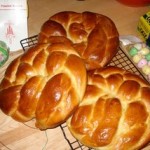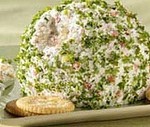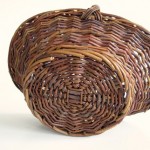An Easter basket, in modern parlance, is a woven container bearing a variety of items ranging from the homemade bread, sweets and snacks to decorated eggs along with other delightful edible candies and treats. The Easter basket signifies the ancient Catholic tradition of families to offer baskets full of food when attending Holy Mass on Easter Sunday, for blessing by a parish priest.
FOOD ITEMS FOR EASTER
 The traditional food items that used to be offered inside an Easter basket, each with their meanings, are cheese, pascha (a round or cylindrical bread symbolizing the Lord); hardboiled eggs, which symbolize new life; salt, which symbolizes Truth of the Word of God; candle, which symbolizes Jesus Christ who is the Light of the World; horseradish, which symbolizes the bitter drink offered to Jesus on Calvary; baked ham or sausage which can stand for sacrificial animals contained in the Old Testament of the Bible; butter, which symbolizes the Lamb of God. A slab of uncooked bacon is also placed in the Easter basket to signify God’s overflowing mercy.
The traditional food items that used to be offered inside an Easter basket, each with their meanings, are cheese, pascha (a round or cylindrical bread symbolizing the Lord); hardboiled eggs, which symbolize new life; salt, which symbolizes Truth of the Word of God; candle, which symbolizes Jesus Christ who is the Light of the World; horseradish, which symbolizes the bitter drink offered to Jesus on Calvary; baked ham or sausage which can stand for sacrificial animals contained in the Old Testament of the Bible; butter, which symbolizes the Lamb of God. A slab of uncooked bacon is also placed in the Easter basket to signify God’s overflowing mercy.
SYMBOLISM OF FOODS ACROSS CULTURES
In the Ukrainian Easter tradition, the Easter basket signifies abundance, joy, and God’s generosity.
 Certain items hold special meaning. A cheese ball, for instance, may mean that people should practice moderation in all things. Salt may serve as reminder of the Christian duty to fellowmen, while butter may symbolize Christ’s goodness, a trait that everyone should emulate.
Certain items hold special meaning. A cheese ball, for instance, may mean that people should practice moderation in all things. Salt may serve as reminder of the Christian duty to fellowmen, while butter may symbolize Christ’s goodness, a trait that everyone should emulate.
Easter is the time for rebirth, and the Easter basket is believed by many people to have originated from the goddess of fertility carrying a basketful of eggs. Pagan people therefore started the custom of offering baskets with early seedlings to the fertility goddess in fervent hopes of an abundant harvest. The idea of an Easter bunny with a basket made of twigs, straw or moss and filled with eggs originated in Germany, though. German settlers in Pennsylvania back in the 18th century continued the Easter bunny and basket traditions.
PERSONALIZED EASTER BASKETS
Through the years, people choose various items deemed worthy of being placed in Easter baskets. In Western as well as most Asian countries today, personalized Easter baskets are given as gifts to loved ones contain gourmet items like cheese, snack items, and wine, plus fun items suited for young members of the family, like candy and chocolates (the ever popular chocolate Easter bunny). In some cases, a bouquet of flowers accompanies the Easter basket goodies. Other contemporary Easter baskets contain a plush Bunny toy or a book, and plastic eggs filled with a variety of candy.
 Easter baskets come in many different sizes and are usually made of wicker material. To make the basket, natural materials like long reeds or twigs are cut and dried. Brittle branches are soaked for a few days in water for them to be more flexible. Modern personalized Easter baskets may be made of wire, and may serve as beautiful centerpieces for the dining table.
Easter baskets come in many different sizes and are usually made of wicker material. To make the basket, natural materials like long reeds or twigs are cut and dried. Brittle branches are soaked for a few days in water for them to be more flexible. Modern personalized Easter baskets may be made of wire, and may serve as beautiful centerpieces for the dining table.
Sprigs that symbolize new life and ribbons are used to adorn the baskets. The traditional Easter basket is lined with a white napkin, and an embroidered linen cloth with multi-colored border can also be used as cover. Preparing an Easter basket is a time-honored tradition that continues to this day. Personalizing an Easter basket is a beautiful way to bring together traditions of today with traditions of days gone by.